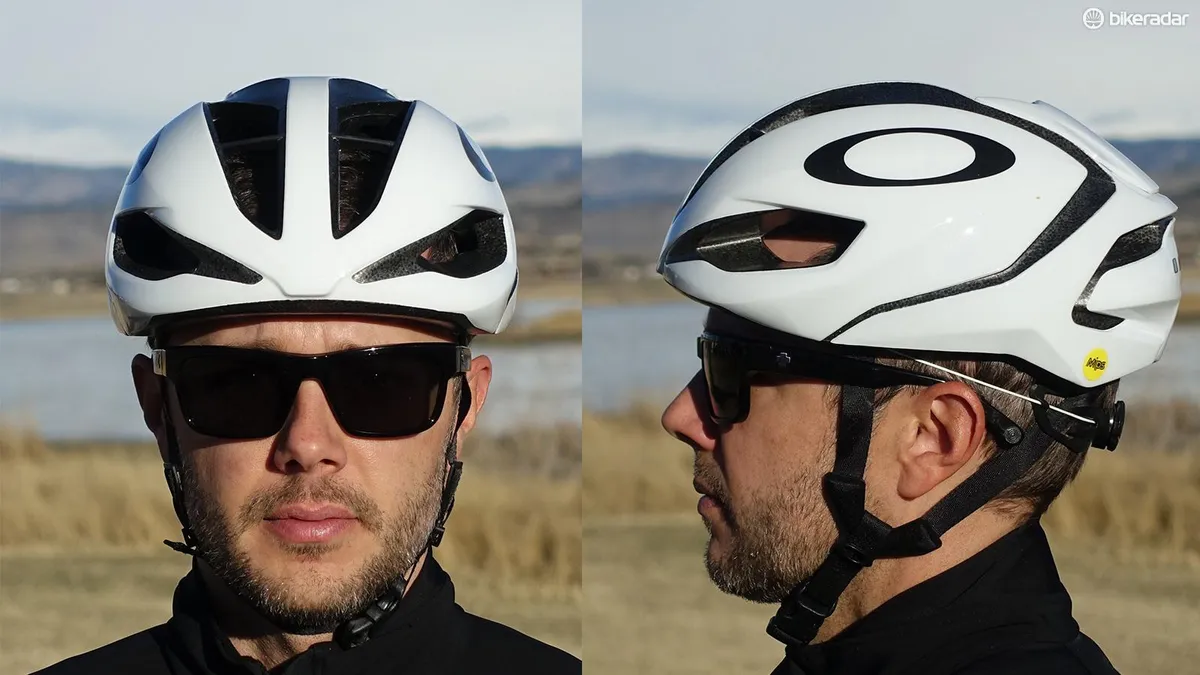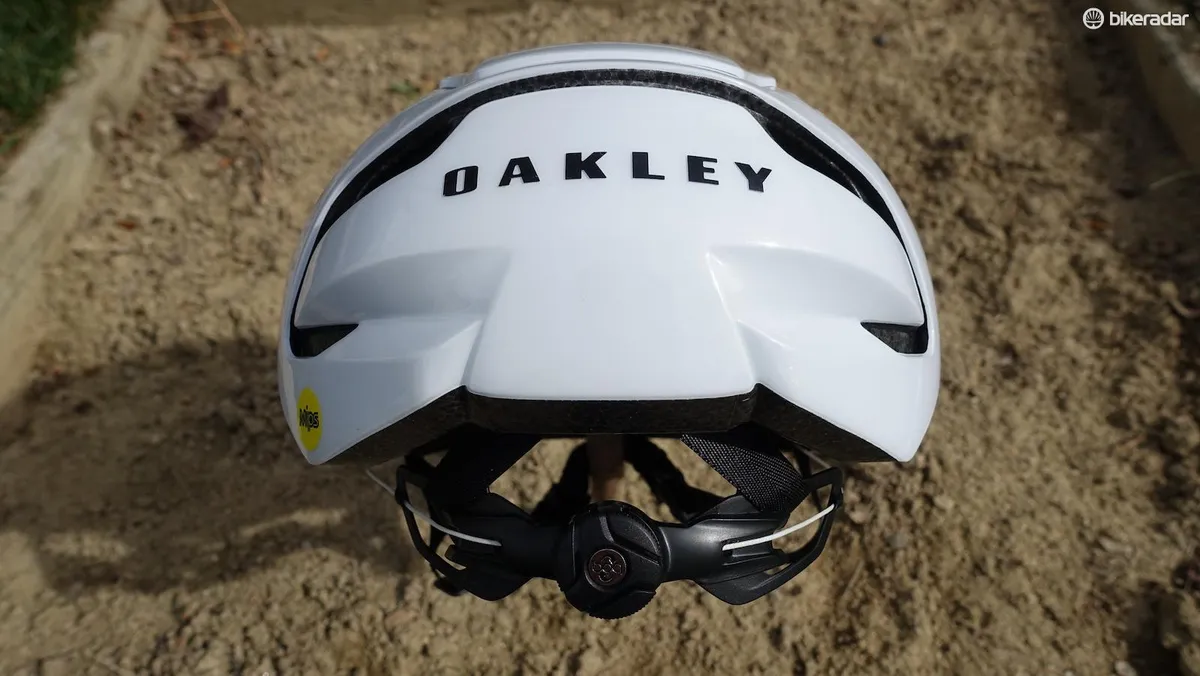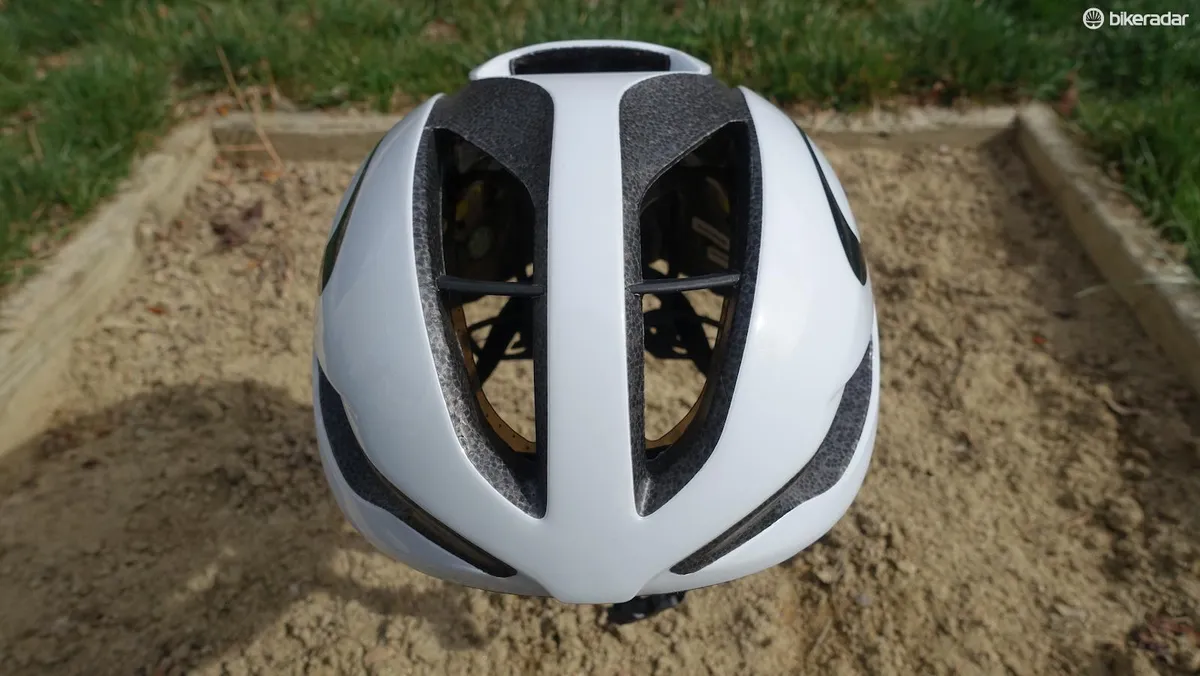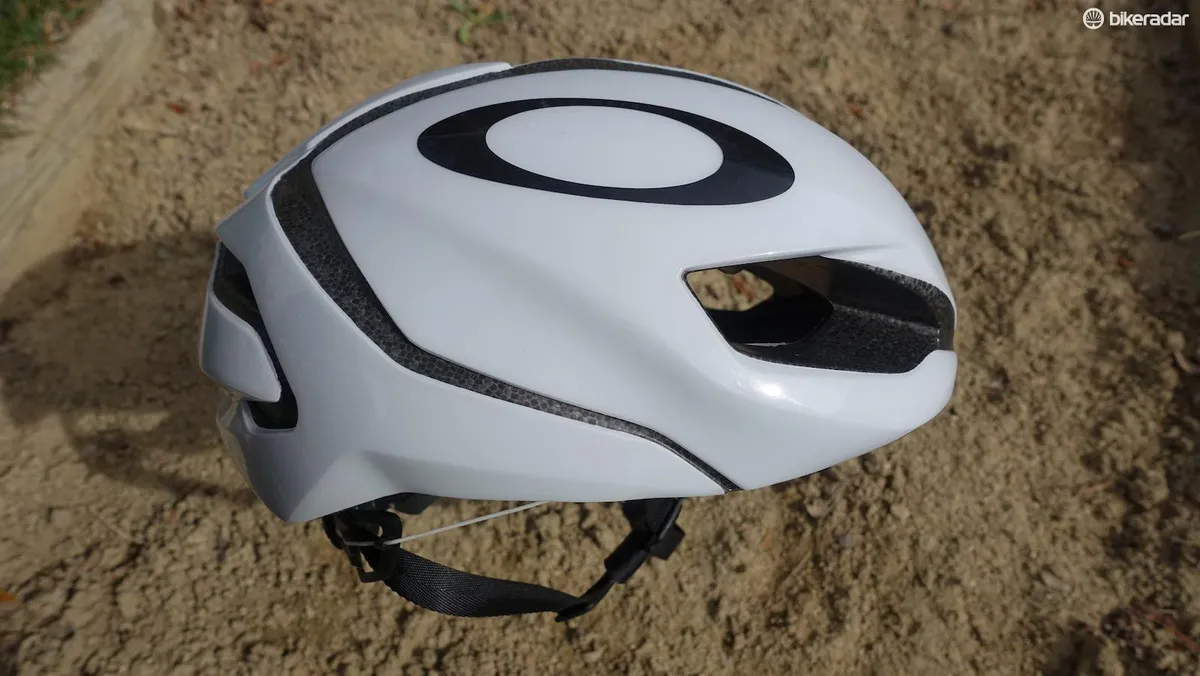The Oakley ARO's rounded profile is a departure from many other aero road helmets that mimic elongated time-trial lids. With a priority on speed, the ARO5 uses four large front vents to scoop air in. At the back, two smaller vents allow air directed through internal channels to exit.
Ventilation on this helmet is surprisingly good despite the small exit vents, especially when going fast. At slower speeds you notice the difference between this helmet and a more ventilated option. If you love long climbs in the middle of summer, you might look at other options.
While I didn’t have a chance to put the ARO5 in a wind tunnel, its small overall size and rounded shape is likely to be swift in many different head positions.
I did do a lot of riding with it, though, and it's a comfortable helmet with a MIPS liner and a BOA fit system.
Inside there are only two pads. One at the brow, the other at the crown. Both use X-Static material to wick moisture.
The BOA system uses a thin soft cord to surround the head entirely and provides even pressure as you dial in the fit. The rear retention device, an anchor for the BOA dial, has three height options.

Best aero road helmets - 8 tested and rated
The under-ear junction is one that is increasingly common. Using a plastic cradle, it is adjustable fore and aft but not in height. While this limits the fit somewhat, it also helps straps lay flat, keeping them out of the wind.
As you would hope, sunglasses fit nicely into the wider front vents of the helmet. I used the helmet with Oakley, POC, Smith and Adidas glasses and all integrated well. The small nature of the BOA fit system helps avoid uncomfortable overlaps with eyewear stems.
Oakley only recently introduced its own helmet line, with the ARO3 vented helmet, the ARO5 aero road model, and the ARO7 for time trials and triathlon.
Fans of professional racing will have noticed the new helmets on the heads of Dimension Data, Katusha, Julien Absalon and others. Sprinters such as Mark Cavendish and Marcel Kittel will both reach for the ARO5 at races that are likely to end in a bunch.

The ARO is available in seven colors including the white shown here, as well as Black, Blackout, Atomic Blue, Dimension Data Green, Retina Burn and Cavendish Green. All feature large Oakley logos on the sides of the helmet, with the Blackout version having a subtler black-on-black logo.
Three sizes are on offer — Small, Medium and Large. I wore a Medium and was happy with its smallish overall size and 303g weight. There are lighter aero road helmets on the market, from Giant, Bontrager and MET. But they only beat the Oakley by 14 to 27 grams.
How to ruin an aero road helmet (don't do this!)
In terms of cost, at £199 / $250, the ARO5 sits right in line with Specialized’s new Evade, but is more expensive than models from MET, Giant and Bontrager. But no one expects a budget-friendly product from Oakley, right?
While I like the aesthetics of this helmet (and it is certainly comfortable), I can’t help but wonder what the next version will look like. The ARO5 represents an impressive first go at an aero road-cycling helmet, but with Oakley’s reputation, I think it could have gone further with the design and really wowed us. If I sound underwhelmed, I don’t mean to. The ARO5 sits right where it should in terms of cost, weight and overall size.




